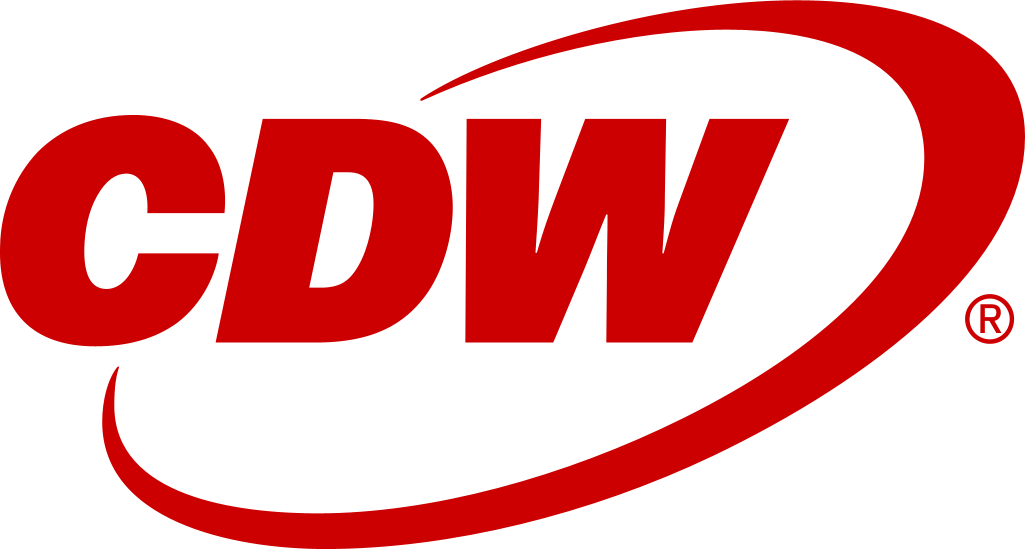1-8 of 44 reviews
What is our primary use case? We utilize both VMware virtual machines and physical machines across different teams. We operate with two thousand servers. In our current setup, we are a serious customer with thirteen Hitachi Virtual Storage Platform systems. We have just recently expanded by purchasing additional big storage. What is most valuable? The active data management of Hitachi Virtual Storage Platform, especially with the HOPS Center, makes it easier to work with the Hitachi Virtual Storage Platform infrastructure. Previously, it was difficult to create and delete LUNs, which would take a long time, but now with HOPS Center, it is functioning correctly. It is now as easy as working with EMC or Dell storage, and the performance is better, especially with new features. The solution's performance, security, and cost are satisfactory. These factors influenced our decision to purchase Hitachi Virtual Storage Platform. What needs improvement? The interface management and monitoring need improvement. Although I receive emails from Hitachi Virtual Storage Platform, I find the management aspect not as good as their hardware. For how long have I used the solution? I have been using Hitachi Virtual Storage Platform for three years in this bank, and in a previous bank for about five years. What do I think about the scalability of the solution? We are able to change and add new features, though we must test and ensure security. Overall, scalability is satisfactory. Which solution did I use previously and why did I switch? Comparatively, EMC offers a better GUI interface and easier server connectivity, but we faced security management issues. This led us to switch to Hitachi Virtual Storage Platform for better performance and pricing. How was the initial setup? The initial setup was straightforward. Adding new storage, creating new LUNs, and attaching them to a host group was not difficult. What was our ROI? While performance, security, and financial aspects of Hitachi Virtual Storage Platform are satisfactory, I am unsure about the exact return on investment. We have invested further by purchasing new storage this month. Which other solutions did I evaluate? I compared Hitachi Virtual Storage Platform to EMC, which offers a better GUI interface. What other advice do I have? I would rate Hitachi Virtual Storage Platform nine out of ten. The main area needing improvement is interface management and monitoring. If public cloud, private cloud, or hybrid cloud, which cloud provider do you use? Other Disclaimer: I am a real user, and this review is based on my own experience and opinions.
What is our primary use case? I use the solution in my company as it is a good storage product. What needs improvement? Hitachi Virtual Storage Platform's GUI or interface for storage and management is a little bit difficult compared to Primera and HPE storage products. I want to see deduplication features in the Hitachi Virtual Storage Platform since it is a good storage system. The GUI interface for storage management is a bit difficult. For how long have I used the solution? I have been using Hitachi Virtual Storage Platform since 2015. What do I think about the scalability of the solution? I think all storage tools have facilities in them to be able to scale up and down. Scalability-wise, I have no complaints with the solution. How are customer service and support? I don't think the product features are available for our company to contact the tool's support team. There was an incident in 2016 and 2017 when both of its controllers failed. It was very strange for me to have a storage in which both the controllers failed. We had to send it across to Japan for investigation, but I haven't received any reply from them yet. How was the initial setup? The product's installation phase was not difficult because the vendor or its partner was involved in its setup process. What was our ROI? I have seen some savings in my company from the use of the product, especially since the market is becoming too competitive nowadays. The companies selling storage which are better than mechanical drives. What's my experience with pricing, setup cost, and licensing? I find Hitachi to be cheaper by five to ten percent when compared to Dell and HP's costs, but the features in Dell are better than Hitachi Virtual Storage Platform. We have only eight terabytes of storage available on Dell, but we can manage to create partitions of about thirty terabytes, meaning it allows for a lot of compression. What other advice do I have? From the data management point of view and for deduplication purposes, Dell storage is the best option. It gives me around a one-is-to-sixteen ratio of compression, while Primera only offers a one-is-to-three ratio. There is no deduplication in Hitachi Virtual Storage Platform because it is an old storage. The product's performance is good. The product is reliable. I rate the solution a seven to eight out of ten. Disclaimer: I am a real user, and this review is based on my own experience and opinions.
What is our primary use case? I use the solution in the company as our main block storage platform. What is most valuable? Global Active Device (GAD) is one of the most valuable features in terms of data management in Hitachi Virtual Storage Platform. With the aforementioned feature, if you have two sites, it just creates a virtual device. You can write and read from whatever site the clients are directed to with the virtual device, and it gets synchronized between both sites. What needs improvement? The admin tools in the Hitachi Virtual Storage Platform definitely have certain shortcomings that require improvement. The admin tools in the Hitachi Virtual Storage Platform need to be made easier, simpler and faster. The Admin tools need to represent year 2024, not the early 2000s. In the future, I would like to see the tool offer NVMe for GAD as well as bigger Storage Pools than ~3PB. For how long have I used the solution? I have been using Hitachi Virtual Storage Platform for eight years. I use the solution as an administrator at a financial institute. What do I think about the stability of the solution? It is a very stable solution. Stability-wise, I rate the solution a ten out of ten. What do I think about the scalability of the solution? Hitachi Virtual Storage Platform is a product that can scale up to a specific amount of drive, including front-end port connections and so on. Scalability-wise, I rate the solution a ten out of ten. The company wants to use the solution for more data and storage purposes in the future. The need of fast block storage will increase so we may increase the solution's capacity in our company. How are customer service and support? The solution's technical support is very professional and quick as long as it's a hardware-based issue. I rate the technical support an eight and a half to nine out of ten. How would you rate customer service and support? Positive How was the initial setup? The product's initial setup phase (hardware) was pretty easy. My company just had to make sure that there is power, connectors and so on, but the actual setup of the box is done by Hitachi itself. When it comes to the Admin Tools there is a lot to improove. The solution can be deployed in half a day. What about the implementation team? The product's deployment phase was managed by Hitachi technicians. What was our ROI? I have not noticed any impacts on the ROI from the implementation of the product in our company. In terms of saving money or time, I would say that I don't care about the ROI as I am just the administrator of the product. What's my experience with pricing, setup cost, and licensing? The product is reasonably priced. The company lifecycled the previous system. The plan is to use the systems for a timefrrame of 5-7 years. We budled all teh licences at the time when the system was bought. What other advice do I have? The biggest value that the product has offered our company is in terms of stability and performance. The product offers block storage and can be used while growing. I recommend the product to others because it's easy to expand. With Hitachi Virtual Storage Platform, there is no need to have a huge system at day zero. I rate the tool an eight out of ten (limitation of storage pool size and the lack of NVMe for GAD Devices). Which deployment model are you using for this solution? On-premises Disclaimer: I am a real user, and this review is based on my own experience and opinions.
What is our primary use case? For Hitachi, I provide training and mapping to existing clusters and coordinate with vendors for hardware values and upgrades. I've been working on Hitachi VSP models and NetApp 2750 models for the past two years. What is most valuable? I work with multiple products from various companies, including HPE and Hitachi. Each product has its own scalability and features. The service provided by Hitachi is good, and I get the IT support I need from the vendors. What needs improvement? For how long have I used the solution? I have been using it for six years. What do I think about the stability of the solution? For the past two years, I haven't faced any outages with Hitachi. I've seen many issues with Dell but not with VSP. I have very few storage boxes in my current organization, but I handle over 200 Hitachi storage boxes with different products. What do I think about the scalability of the solution? Scalability provides us with flexibility. For example, we can easily increase storage as needed. We also have multi-path redundancy for added reliability. For data redundancy, we create RAID levels, usually RAID 5 or the recommended RAID 6. To ensure power availability in the data center, we have two power sources and redundant cabling. Each inverter has a backup from another inverter. I recommend customers use a backup configuration for redundancy, such as Veeam backup or Commvault. These products protect against hardware failures by backing up VMs. I would rate the scalability a nine out of ten. I have over 200 customers for Hitachi storage, one or two customers on the VSP platform, and all of them are being serviced. How are customer service and support? I have contacted them for firmware upgrades, hardware failures, and trial replacements. I was coordinating with the vendor. I provide support for customers. I work for a company and give support to customers. So, the response time and the quality of the support was good. Which solution did I use previously and why did I switch? I work with NetApp, and I have been working with HPE, Dell, and IBM products for the past six years. I learn new things whenever I work on products from HPE, NetApp, and other vendors. I wasn't aware of Hitachi Storage before, but I started working on it at this company. It's a little different. The way we provide and learn from the VSP models is different compared to HPE and Dell. What about the implementation team? Not just anyone can do it. For example, I'm a storage engineer, and if I guide someone on my team, they can't necessarily do my job. So, the person needs a basic understanding and work experience. Sometimes, it requires specific knowledge, and people need to prepare for the tasks assigned to them. Once the person has prepared, they can do whatever is assigned. What other advice do I have? Overall, I would rate the solution a nine out of ten. It is a good product. I would recommend it. Disclaimer: I am a real user, and this review is based on my own experience and opinions.
What is our primary use case? The product is used in our company since we have implemented a proxy server for our organization from Hitachi. With Hitachi, my company has dealt with the planning, implementation, and migration of the products. The migration was done specifically from our company's site. Hitachi provided the planning and implementation plans, and the full implementation process was carried out with the help of Hitachi's partner. What is most valuable? The solution's most valuable feature is that it provides a secure gateway with SSL inspection. The tool also allows our company to control a user's internet access on a time-based or quota-based basis. What needs improvement? The complex setup phase is an area where improvements are needed. For how long have I used the solution? I have been using Hitachi Virtual Storage Platform since 2016. What do I think about the scalability of the solution? It is a scalable solution because our company initially implemented it for around 50,000 users, and now we plan to increase the number to around 200,000 users. My company does plan to increase the use of the solution in the future. How are customer service and support? The product's support might have some issues. Hitachi provides on-site support. My company deals with Hitachi's customer support and engineers, as these are the two types of people available for on-site support. How was the initial setup? The product's initial setup phase is complex and complicated. The solution can be deployed in six months because our company needs each and every implementation node and the report required for it. Implementing the tool takes around six months. For the implementation process, my company first had to have a meeting with Hitachi, after which we were given a plan which was discussed in our organization's internal meeting. My company goes through the two or three types of installation proposals received from Hitachi, and then we finalize it so that the implementation process can be started. A person from Hitachi is physically available on-site during the implementation process. The solution is deployed on an on-premises model. In 2016, when my company wanted to implement Forcepoint, we found that it was available only on the on-premises version and not in the cloud. What's my experience with pricing, setup cost, and licensing? In our company, we only pay towards the licensing charges associated with Forcepoint, as Hitachi is considered to be a third-party product for us. What other advice do I have? Speaking about how the tool streamlined our company's data access and storage processes, I would say that previously, we were using Microsoft Project. Hitachi later approached our company with a proxy solution consisting of software and hardware components, and after having a few meetings, Hitachi explained to us the features and benefits of a proxy solution. Hitachi then took the inputs from our managers and management while taking into consideration areas like how many users would be using it and what other existing solutions are used in the company, after which our company was provided with a proper plan for implementation. For implementation, two people from Hitachi's end were appointed at our location, and they worked with four people from our company. The product's reliability has been crucial for our company's operations. Hitachi has been really good since it provides proper documentation, which provides proper information about the solution. Hitachi's support team is also good. The people provided by Hitachi for on-site support are very experienced and helpful since, knowledge-wise, they are the best. The cost-effectiveness of the use of the tool in my company stems from the fact that even though there is another product in our company that we use with Hitachi Virtual Storage Platform when it comes to Hitachi, the support personnel has deep knowledge to solve any problem on-site. I rate the tool an eight out of ten. Which deployment model are you using for this solution? On-premises Disclaimer: I am a real user, and this review is based on my own experience and opinions.
What is most valuable? The Hitachi VSP has significantly improved data storage scalability by addressing various issues. Through their research and development efforts, they've incorporated customer feedback regarding deployment speed and performance requirements. The tool's impact on data retrieval times is primarily seen in performance and reliability. It has proven to be more reliable. Speed in restoration varies depending on the nature of the backup or image being restored. Its most valuable feature is the centralized consolidation portal. In terms of performance and agility, the Hitachi VSP stands out against competitors primarily due to its reliability and storage performance capabilities. What needs improvement? The solution is priced higher than its competitors. For how long have I used the solution? I have been using the product for two years. What do I think about the stability of the solution? I rate the product's stability an eight out of ten. What do I think about the scalability of the solution? I would rate the tool's scalability at around seven point five on a scale of one to ten. While the storage solution is proprietary, it may not provide the same integration as some cloud-based solutions. How was the initial setup? The initial setup of the Hitachi VSP was relatively straightforward for us. Hitachi deployed an engineer who handled the configuration and initial setup process. Subsequently, they provided training and guidance on managing and monitoring the system and providing storage for various needs, such as integrating with other cloud platforms like AWS. The deployment duration can vary depending on the size and complexity of the setup. In our case, as it was for a tier-two data center, the deployment process took approximately two months. This included around one month for preparation and approval processes, followed by another month for delivery and configuration of the storage components. What's my experience with pricing, setup cost, and licensing? I would rate the solution's pricing at around eight or nine on a scale of one to ten. While the solution may be priced higher than some competitors, we prioritize the quality and durability of the storage. What other advice do I have? Enterprise customers mostly use the tool. I would recommend Hitachi VSP to others. It excels in terms of quality and performance and adheres to industry standards. I rate it an eight out of ten. Disclaimer: My company has a business relationship with this vendor other than being a customer:Partner
How has it helped my organization? I use it for data consolidation management tasks, and we'll go through the control apps. I go to the controller to do that. Moreover, Hitachi VSP streamlined our data access and storage processes. So, it's got NFS and CIFS. And the CFIS, too, depends on the disk type we put in, it can format files and data for different protocols like SMB.So it's versatile in its own ways. We use it in conjunction with the cloud. So it's multi-tenant, making sure that it is cloud-ready. This is cloud-ready hardware and software. And, the VSPs have the capacity to integrate other third-party software and the engine is very, very powerful. What needs improvement? The deployment could be a bit easier, because it's a bit tricky. For how long have I used the solution? I have been using it for more than a year now. What do I think about the stability of the solution? When I look at storage, it's about uptime, disaster recovery, and all those things. So, its reliability has been crucial to our operations. I haven't had any issues with the stability of the product. Normal issues, as we go through patch management, make sure that we do not install anything without looking at the bug scrubbing and all that stuff, and ensure that we always have a stable platform. Do our research and in the background, talk to Hitachi and not take it just by ourselves. What do I think about the scalability of the solution? It's a multi-tenanted model, a monthly tenant, it's not just one organization we're hosting. But depending on the customer, we just bring on a tenant. It's modular. So I can keep growing. But, again, every modular thing also has its limitations. For example, if I take an E590 series, it can grow so much because the engines can support and handle so much, then you gotta go up to the higher one. What I haven't seen is if the E590 is compatible with the next level up, if they are interoperable, or if they have to be treated as a separate cluster. I am not sure about that yet. How are customer service and support? The customer service and support are reasonably good. The environment I work in, there always remains an element of surprise, and there are restrictions. But Hitachi has good technical people. The customer account manager is good and gets the thing straightaway. How was the initial setup? The setup is in three parts. One is the field setup, with someone coming in to do the initial configuration, which would have an IP address, and work away from it. Followed by the Professional Service setup, which is architecture and design. It's a very versatile box, so that setup is very tricky. We have to get it right the first time. If you make a mistake and don't design or architect the platform correctly, you're going to have to unwind, which can be done with the help of snapshots. With the vCenter, you control these things, and in this case, the controller. And you take a snapshot and put it on another box. So it could be easier to deploy. What's my experience with pricing, setup cost, and licensing? Architecture-wise, it's actually at a competitive price point. It is not cheap. But for the purpose-built, and one thing I've never seen, which is probably an industry thing, is that it's modular to start with, but it has to be the same model and make for it to grow. Every business is different. Like, when I was using the Dell EMC PowerStore 1000 (not Dell 1000P), the cost analysis for that specific business is different from what I'm doing now. So, it depends on if I'm comparing apples to apples, and in this case, it's not. It's apples to oranges. We did consider the cost when we were sizing Hitachi against another product. But ultimately, it came down to more than just the price. You need to look at the technology, the engineers available for DevOps support, and what kind of engineers you can find in the market. Are they more familiar with NetApp or Hitachi? So, while buying the hardware and software itself might not be the most expensive part, the ongoing cost of maintenance and hiring qualified labor can be significant. If you just look at the upfront cost of hardware and software, maybe there are other products that are a bit cheaper. But then there might not be enough qualified engineers. And not enough certified engineers for those other products. If we had to train people and get them up to a higher standard of certification, the time investment for the company or organization would have been much higher. So, from a one-time cost perspective, maybe there were other products that were cheaper upfront. But in this case, considering the ongoing labor costs, Hitachi ended up being a more cost-effective option. What other advice do I have? A good part is it is scalable. It's reliable. It is both at all. But it does not work well with BusyBox. Even though it supports multiple vendors, some features do not support multiple tenants; they are not vendor-adopting. For example, bring in a NetApp and try to use it with Hitachi. You'll either have limitations with that application or you'll actually always have to do extra patching. Or the other tricky part that needs to happen. Overall, I would rate the solution a seven out of ten. Disclaimer: I am a real user, and this review is based on my own experience and opinions.
What needs improvement? In my experience, I've encountered several limitations, particularly in the operational tasks, when dealing with unified storage. I've faced significant performance issues, especially when extending block capacities. The operational challenges, such as the console getting blocked and preventing any activity, have been a recurring issue. For instance, extending a replicated volume from one site to another involves breaking the mirror application, adding unnecessary complexities. Unlike other products, like Dell, where extending volumes is straightforward, this process on this platform requires multiple steps, including breaking and reestablishing the application, making it time-consuming and not straightforward. The Hitachi Virtual Storage Platform faces challenges when it comes to features like deduplication and compression. Enabling these features can lead to processor overload, resulting in performance degradation, especially under high loads. It faces limitations, particularly during code upgrades. If the CPU utilization exceeds 65 percent, the standard procedures for firmware or code upgrades are restricted. For how long have I used the solution? I have been working with the product for four years. What do I think about the stability of the solution? I rate the product’s stability a five out of ten. What do I think about the scalability of the solution? There are no significant challenges in terms of scalability, and it can accommodate larger storage capacities compared to other storage solutions. How are customer service and support? The support experience with Hitachi VSP is characterized by a lengthy process for issue resolution. For a simple problem, the support team typically requests logs, which take about 30 minutes to generate. Uploading the logs adds another 30 minutes, and the engineer's review of the logs requires an additional hour. Consequently, the entire process takes two hours, leaving the system in a critical state without a resolution during that time. How would you rate customer service and support? Negative How was the initial setup? I rate the product’s deployment one out of ten. The deployment process lasted for three months.The initial deployment encountered numerous performance issues, leading to instability and frequent disruptions in production. The on-site engineering team was actively engaged for almost three months to address and resolve these challenges. The integration process of Hitachi VSP into the existing IT infrastructure is not straightforward and is a bit complex. What about the implementation team? The initial deployment was initially attempted by a third party, but they were unsuccessful in resolving the issues. Subsequently, Hitachi engineers were directly engaged and worked on-site for nearly three months, facing challenges throughout the process. What's my experience with pricing, setup cost, and licensing? The solution is expensive. What other advice do I have? I rate the overall product a four out of ten. Which deployment model are you using for this solution? On-premises Disclaimer: I am a real user, and this review is based on my own experience and opinions.

















